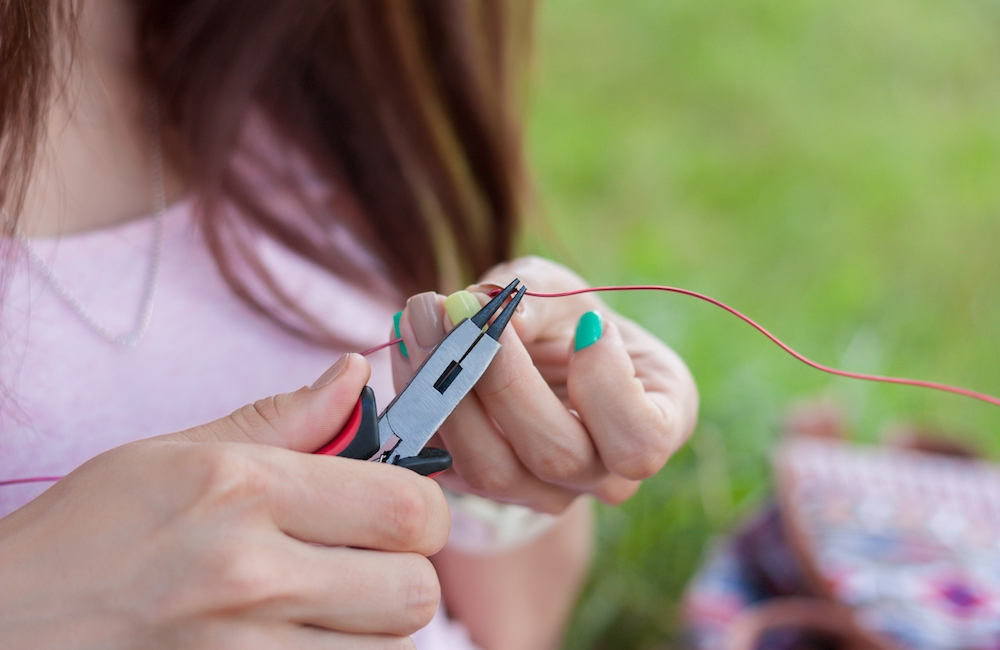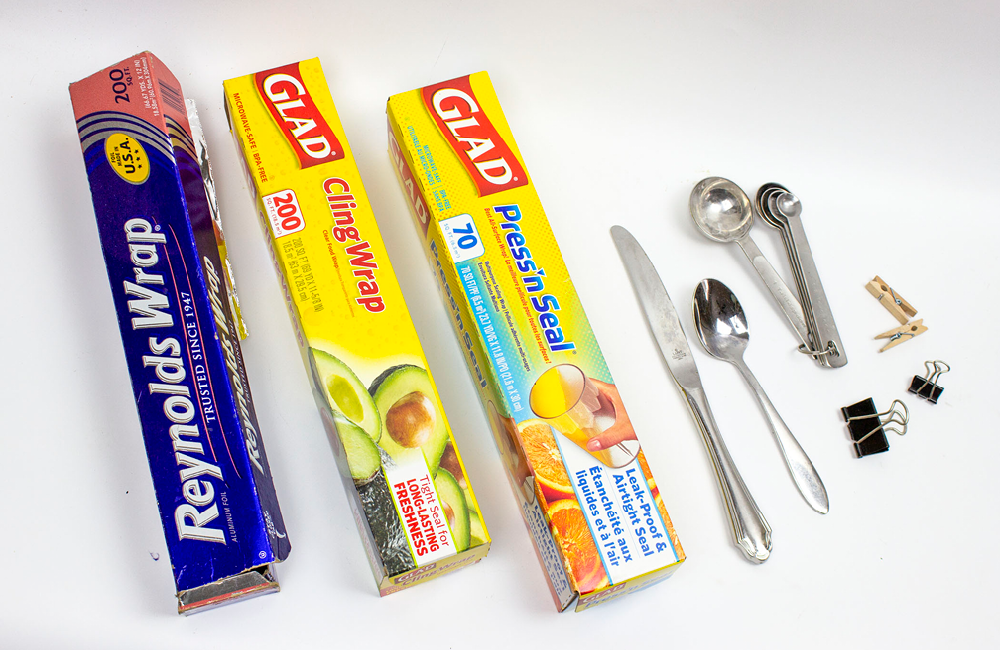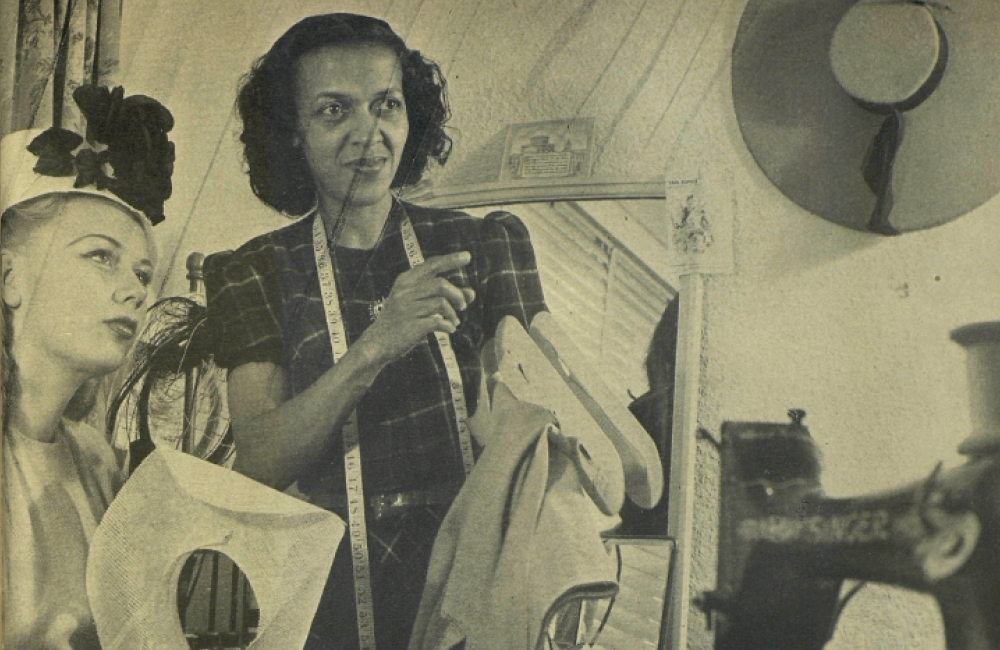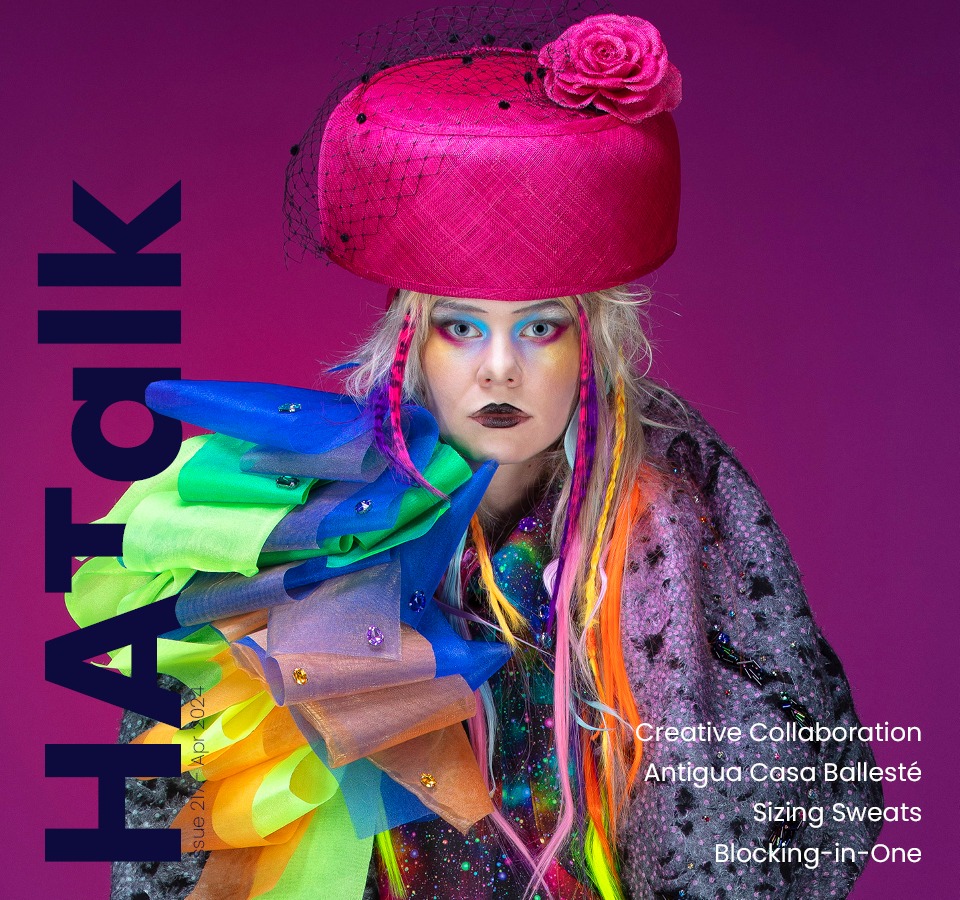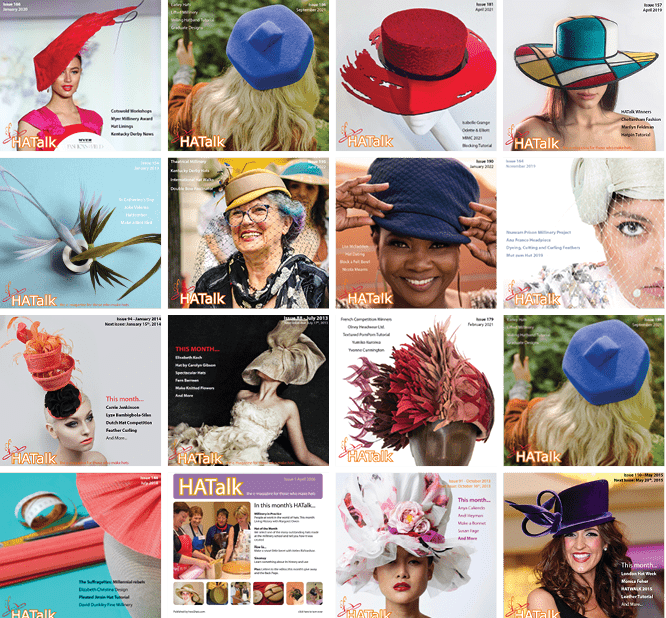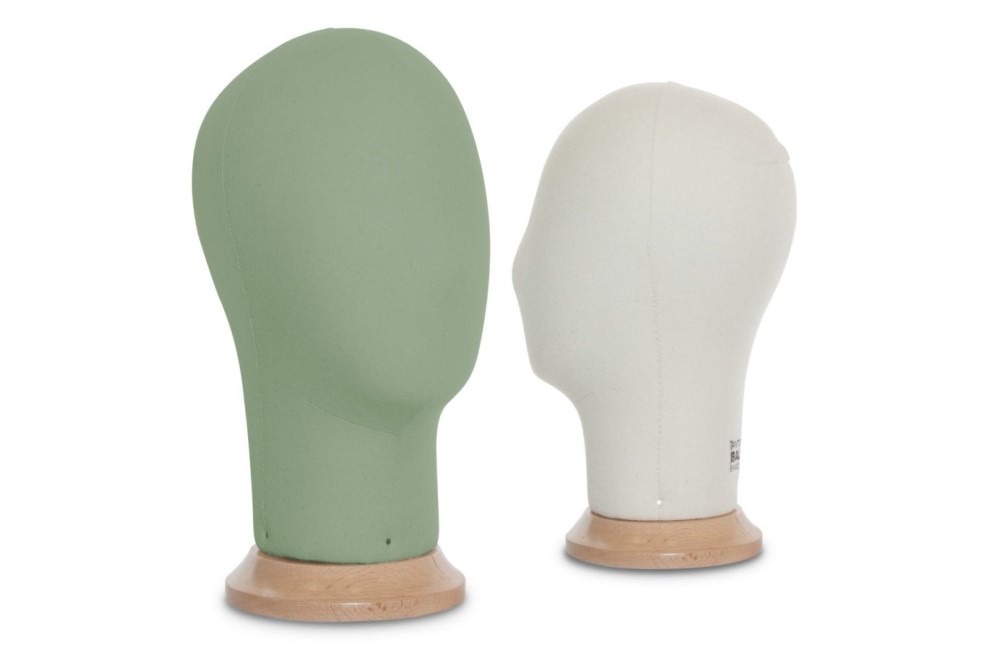Blog / Six of the Best Thermoplastics for Millinery
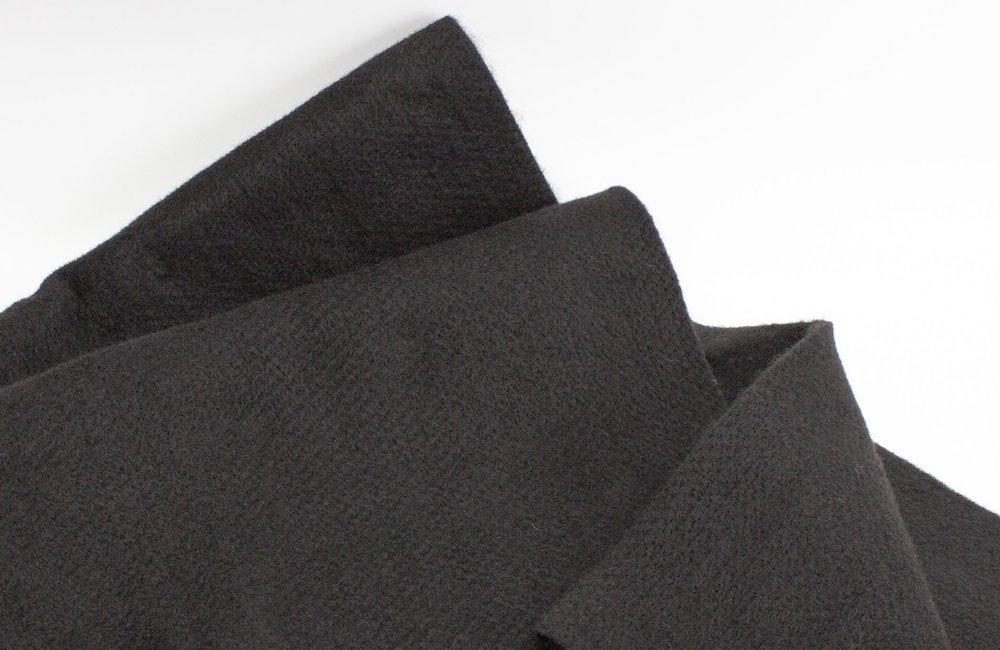
Six of the Best Thermoplastics for Millinery
Thermoplastics for Millinery
Some of the newest and most versatile materials for millinery are thermoplastics. Often used in the theater and cosplay worlds, thermoplastics are plastic polymer sheets which can be softened using heat and then sculpted. Whatever shape you create then hardens into a strong form when cooled. Initially, working with thermoplastics may seem intimidating. With practice and some creative thinking, however, knowing how to use these modern millinery materials can be a great addition to your skill set for creating headwear.
Working with thermoplastics will speed up your blocking time and give you a wide variety of creative options for making trims. By blocking your hat base using a thermoplastic, you eliminate the use of water and drying time. The plastic will cool and harden in a fraction of the time that wet felt or straw would. On top of this, you can create a whole range of effects using thermoplastics that are simply not achievable with more traditional materials.
There are a wide variety of thermoplastics on the millinery market and each has its own characteristics and best uses. Despite their differences, however, they can all be formed using a heat gun or hand steamer.
Here is a brief overview of six of the best thermoplastics for making hats, headpieces and fascinators.
Fosshape®
Known as a buckram substitute, Fosshape® creates a strong, breathable and water-resistant foundation. It starts out soft, like a thick felt, and can be cut with scissors or sewn without fraying. No additional stiffener or drying time is required when working with this thermoplastic, but it can shrink up to 30% when heated. Fosshape® is available in 300, 400 and 600 gram per meter density and gets thicker as the density increases. The image above shows black Fosshape®400 from American millinery supplier Humboldt Haberdashery.
Wonderflex®
Wonderflex® comes in hard sheets and sets very hard. It becomes sticky when heated, so it bonds to itself and fabrics to create rigid shapes. It has a ‘wrong’ side, which is a polyester reinforcing mesh. You need sturdy scissors or a utility knife to cut it. It can be reheated and remolded, as well as primed and painted. To learn more about how to use this interesting thermoplastic, try Carrie Jenkinson’s Wonderflex Spirals project.

Worbla
Worbla is the brand name of a line of thermoplastic products. These sheet plastics come in a range of colors and textures, as well as transparent and pellet forms. For millinery, some of the brands’ most commonly used thermoplastics are:
- Worbla’s Finest Art (brown)
- Worbla’s Black Art (black)
- Worbla’s Pearly Art (white)
- Worbla’s TranspArt (transparent)
Learn more about Worbla Thermoplastics.
Plastic Fantastic
Originally developed as a casting bandage for the medical industry, this perforated, grid-like plastic sheeting can be stretched and shaped to achieve unique sculptural effects. Plastic Fantastic has holes which form a mesh when stretched, so it works well for creating veils or layering over fabrics.
Crystoform
Crystoform is a crystal-clear thermoplastic material that can be painted to create dazzling plastic flowers and bows. It takes more heat to soften and cools harder than some other thermoplastics.
HatBondCM
Recently developed and introduced by Australian millinery thermoplastics expert Carole Maher, HatBondCM is great for hat making because it is very thin and very sticky. This allows it to bond fabrics on both sides. The thinness also keeps it soft for molding and stops it from showing through when cooled. It is great for making flower petals and other lightweight details.
This is just a quick overview of a few of the most popular thermoplastics in millinery right now. Of course, the best way to learn about these materials is to use them. Chances are, you will find you like working with some more than others. Whichever thermoplastics you prefer, however, you are sure to find that they are a great tool for developing your own unique styles and creations.
Learn more about Plastic Fantastic, Crystoform and HatBondCM.
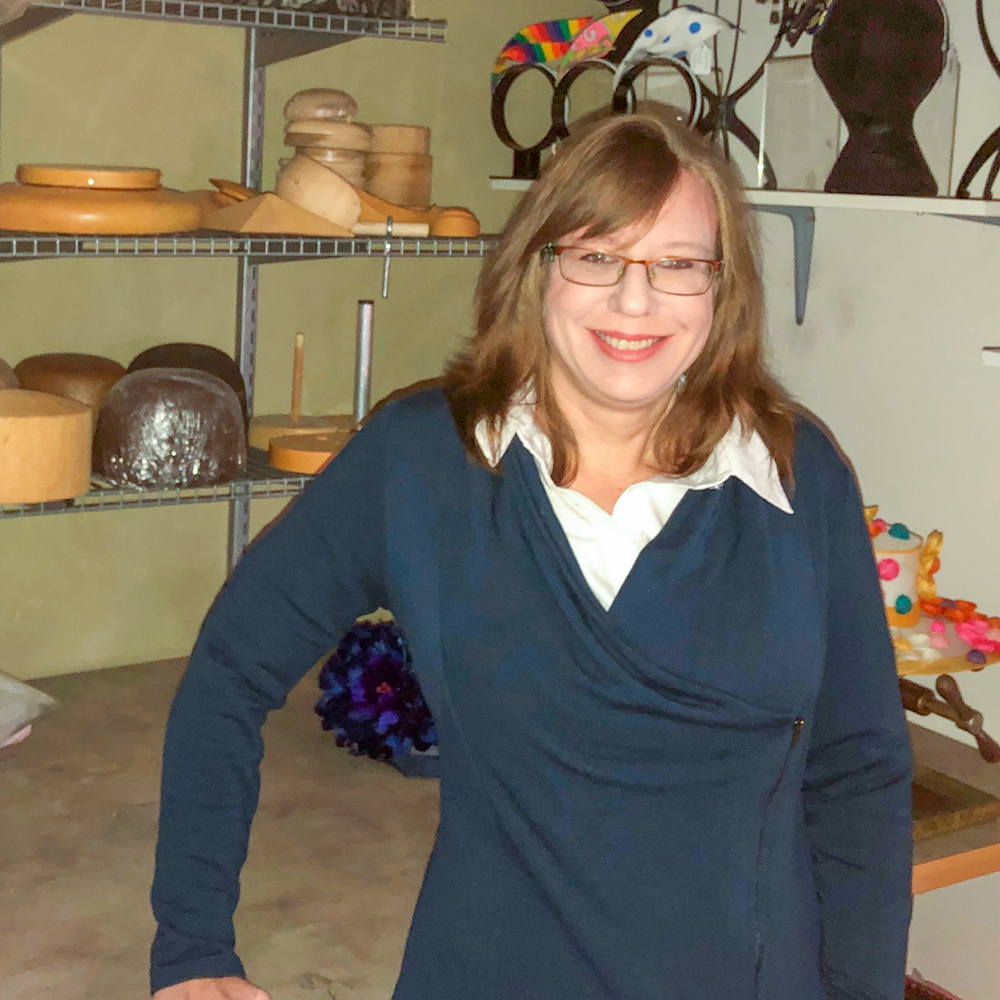
About the Author
Amy Fowler is the creator of the bespoke, California-based Millinery by Amy Fowler label. She also runs Humboldt Haberdashery, an online millinery supplier.
See Amy’s full bio HERE.
Popular Articles
Latest e-Magazine
Featured Supplier

Six of the Best Thermoplastics for Millinery
Thermoplastics for Millinery
Some of the newest and most versatile materials for millinery are thermoplastics. Often used in the theater and cosplay worlds, thermoplastics are plastic polymer sheets which can be softened using heat and then sculpted. Whatever shape you create then hardens into a strong form when cooled. Initially, working with thermoplastics may seem intimidating. With practice and some creative thinking, however, knowing how to use these modern millinery materials can be a great addition to your skill set for creating headwear.
Working with thermoplastics will speed up your blocking time and give you a wide variety of creative options for making trims. By blocking your hat base using a thermoplastic, you eliminate the use of water and drying time. The plastic will cool and harden in a fraction of the time that wet felt or straw would. On top of this, you can create a whole range of effects using thermoplastics that are simply not achievable with more traditional materials.
There are a wide variety of thermoplastics on the millinery market and each has its own characteristics and best uses. Despite their differences, however, they can all be formed using a heat gun or hand steamer.
Here is a brief overview of six of the best thermoplastics for making hats, headpieces and fascinators.
Fosshape®
Known as a buckram substitute, Fosshape® creates a strong, breathable and water-resistant foundation. It starts out soft, like a thick felt, and can be cut with scissors or sewn without fraying. No additional stiffener or drying time is required when working with this thermoplastic, but it can shrink up to 30% when heated. Fosshape® is available in 300, 400 and 600 gram per meter density and gets thicker as the density increases. The image above shows black Fosshape®400 from American millinery supplier Humboldt Haberdashery.
Wonderflex®
Wonderflex® comes in hard sheets and sets very hard. It becomes sticky when heated, so it bonds to itself and fabrics to create rigid shapes. It has a ‘wrong’ side, which is a polyester reinforcing mesh. You need sturdy scissors or a utility knife to cut it. It can be reheated and remolded, as well as primed and painted. To learn more about how to use this interesting thermoplastic, try Carrie Jenkinson’s Wonderflex Spirals project.

Worbla
Worbla is the brand name of a line of thermoplastic products. These sheet plastics come in a range of colors and textures, as well as transparent and pellet forms. For millinery, some of the brands’ most commonly used thermoplastics are:
- Worbla’s Finest Art (brown)
- Worbla’s Black Art (black)
- Worbla’s Pearly Art (white)
- Worbla’s TranspArt (transparent)
Learn more about Worbla Thermoplastics.
Plastic Fantastic
Originally developed as a casting bandage for the medical industry, this perforated, grid-like plastic sheeting can be stretched and shaped to achieve unique sculptural effects. Plastic Fantastic has holes which form a mesh when stretched, so it works well for creating veils or layering over fabrics.
Crystoform
Crystoform is a crystal-clear thermoplastic material that can be painted to create dazzling plastic flowers and bows. It takes more heat to soften and cools harder than some other thermoplastics.
HatBondCM
Recently developed and introduced by Australian millinery thermoplastics expert Carole Maher, HatBondCM is great for hat making because it is very thin and very sticky. This allows it to bond fabrics on both sides. The thinness also keeps it soft for molding and stops it from showing through when cooled. It is great for making flower petals and other lightweight details.
This is just a quick overview of a few of the most popular thermoplastics in millinery right now. Of course, the best way to learn about these materials is to use them. Chances are, you will find you like working with some more than others. Whichever thermoplastics you prefer, however, you are sure to find that they are a great tool for developing your own unique styles and creations.
Learn more about Plastic Fantastic, Crystoform and HatBondCM.

About the Author
Amy Fowler is the creator of the bespoke, California-based Millinery by Amy Fowler label. She also runs Humboldt Haberdashery, an online millinery supplier.
See Amy’s full bio HERE.
